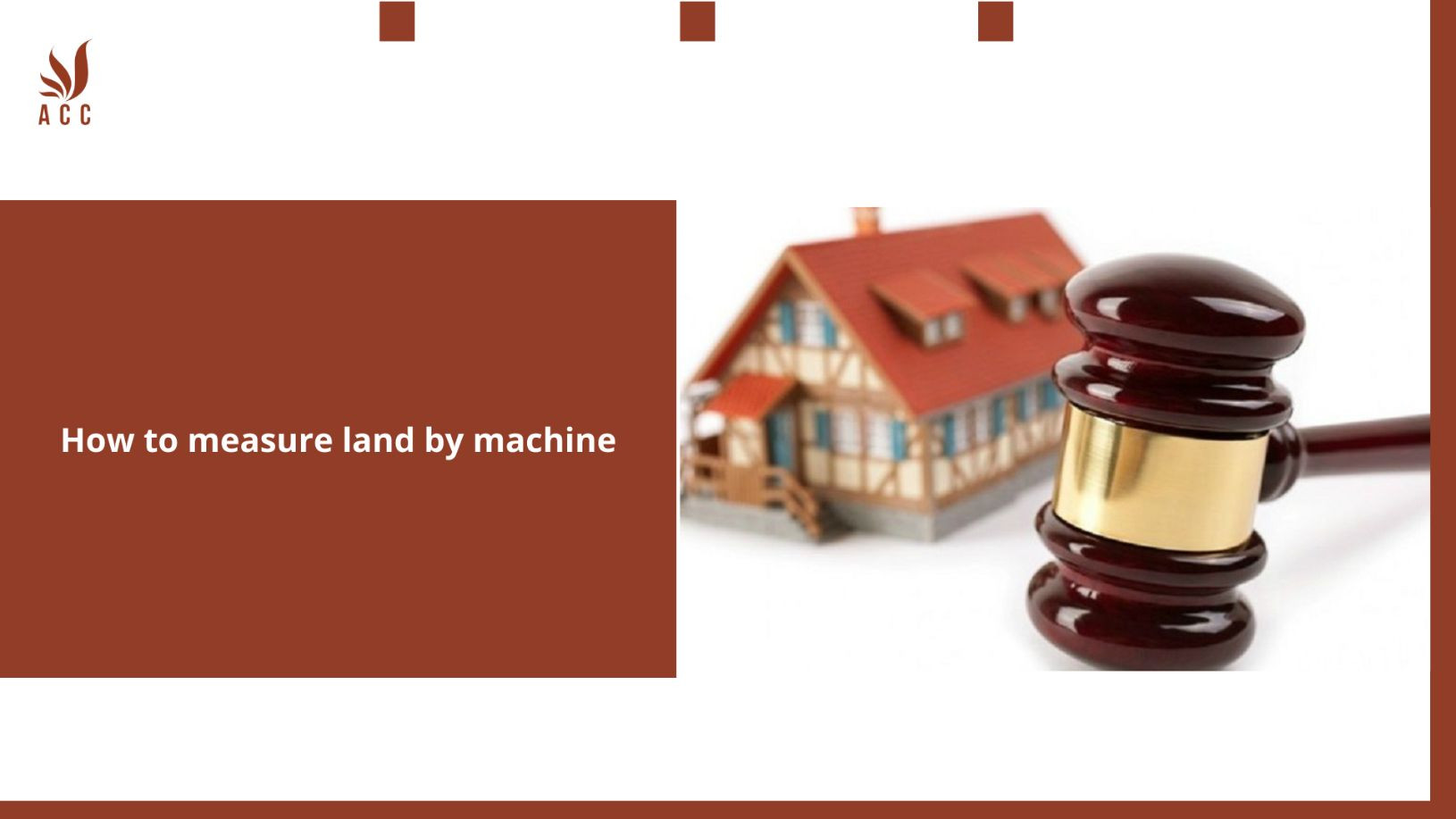Measuring land by machine involves the use of advanced surveying and mapping technology to accurately determine the size and boundaries of a piece of land. One of the most common and precise methods for land measurement is using Global Positioning System (GPS) technology and Geographic Information System (GIS) software. Here's how you can measure land by machine:

1. Gather Equipment and Data:
You will need GPS equipment, such as a high-precision GPS receiver or rover, and access to GIS software.
Obtain any relevant data, including property boundary information, existing survey records, or maps.
2. Prepare the GPS Equipment:
Ensure that your GPS equipment is in working order, and set it up according to the manufacturer's instructions.
Connect the GPS receiver to a data collector or a tablet with GIS software.
3. Establish Control Points:
Before starting the land measurement, set up control points with known coordinates in the area. These control points serve as reference points for accurate measurements.
4. Collect GPS Data:
Walk or drive around the perimeter of the land you want to measure, making sure to stop at designated intervals to collect GPS data points. The GPS receiver records your position and elevation at each point.
5. Data Post-Processing:
After data collection, the GPS data may need to be post-processed for greater accuracy. This can involve correcting for factors like satellite signal interference and atmospheric conditions.
6. GIS Mapping:
Import the GPS data into GIS software. Overlay the collected data onto a digital map or satellite imagery. This will allow you to see the land's boundaries and create an accurate map of the area.
7. Measurement Calculation:
Using GIS software, calculate the land's area by creating a polygon or boundary around the area of interest. The software will provide the area measurement based on the collected GPS data.
8. Boundary Verification:
Compare the measured boundaries with existing property records, if available, to verify accuracy.
9. When using ACC Law Firm's land-related services, entrepreneurs will receive
When using ACC Law Firm's land-related services, entrepreneurs will receive expert advice and assistance in navigating various legal aspects of land ownership and transactions. This includes guidance in property acquisitions, leases, zoning regulations, land use planning, and any other land-related legal matters. ACC Law Firm's team of experienced attorneys will provide personalized support to entrepreneurs, ensuring compliance with applicable laws and regulations, protecting property rights, and optimizing the value of their land investments.
10. Q&A
Q1: What machines are commonly used for land measurement and surveying?
A1: Various machines and equipment are commonly used for land measurement and surveying, including Total Stations, Global Positioning System (GPS) devices, unmanned aerial vehicles (UAVs or drones), and terrestrial laser scanners. Each of these machines has specific applications and capabilities for accurate land measurement.
Q2: How does a Total Station work for land measurement?
A2: A Total Station is an optical instrument that combines electronic theodolite and distance measuring functions. It works by emitting a laser beam to a target, which reflects the beam back to the instrument. The Total Station measures the time taken for the beam to travel to the target and back, allowing it to calculate the distance. It also measures the vertical and horizontal angles, enabling precise land measurements.
Q3: What is the role of GPS devices in land measurement?
A3: GPS devices use satellite signals to determine precise coordinates on the Earth's surface. For land measurement, surveyors use GPS devices to collect data points that help establish boundaries, positions, and elevation data. Real-time kinematic (RTK) GPS is often employed for high-precision land surveying.
Q4: How can drones be used for land measurement and surveying?
A4: Drones equipped with cameras, Lidar, or other sensors are used for aerial land measurement and surveying. They capture high-resolution images, 3D models, or point cloud data, which can be processed to create detailed maps and measurements. Drones are particularly useful for large and remote land areas.
Nội dung bài viết:






Bình luận